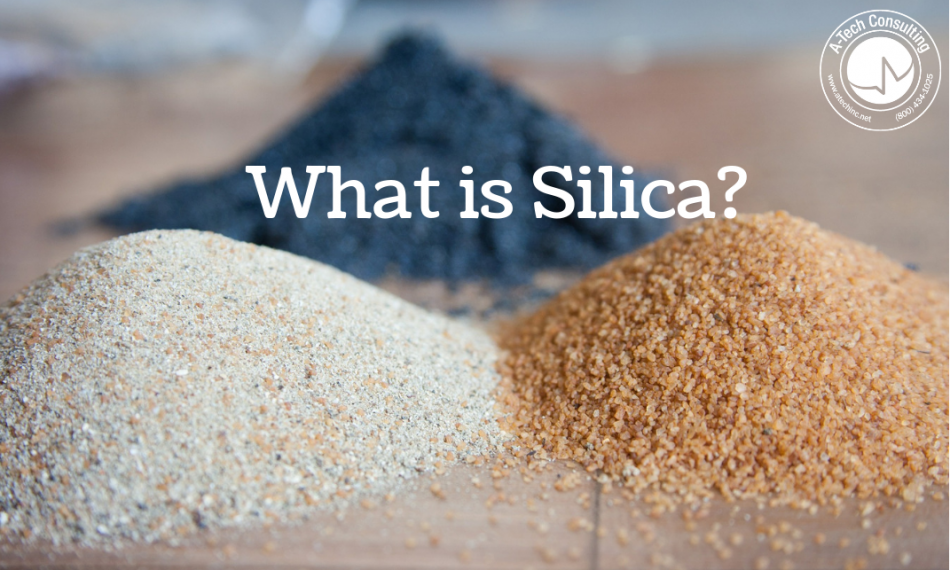
Although silica seems like an exotic chemical compound, it is actually a very common mineral found in materials such as stone, artificial stone and sand. Silica is commonly found in nature in various forms. The most common is quartz. Are you thinking quartz countertops? Yes, it is in there. This is how silica looks like:

If undisturbed, it is not dangerous but when it becomes airborne from activities such as drilling, sanding, etc. then it can become hazardous because we can breathe it into our lungs. If airborne, we refer to it as respirable silica.
Why is respirable silica a hazard?
This is due to the small particles being able to travel deep into our lungs and cause respiratory diseases such as silicosis. The respirable dust particles cause “fibrosis” or scar tissue formation in the lungs. This reduces the lung’s ability to extract oxygen from the air. There is NO CURE. See diagram below for a good visual:
So, what should you do?
1st Step: Find out if your material has silica. Look at your Safety Data Sheet for these terms:
- Quartz
- Fused
- Tripoli
- Cristobolite
- Tridymite
2nd Step: Are there are any activities that create dust from these materials?
If so, as an Employer you need to know that the Division of Occupational Safety and Health (DOSH), better known as Cal/OSHA requires employers to take steps to protect workers from exposure to respirable silica. One of these requirements is to determine worker exposure to silica by conducting silica exposure monitoring. It is mandated that exposures are at or below the permissible exposure limit (PEL) of 50 micrograms of respirable crystalline silica per cubic meter of air averaged over an 8-hour work day (µg/m3).
3rd Step: Contact A-Tech to conduct silica exposure monitoring and assist you with a silica exposure control plan.
Resources:
Cal/OSHA Respirable Silica Standard Webpage
OSHA’s Fact Sheet for Respirable Silica Standard for Construction
OSHA’s Fact Sheet for Respirable Silica Standard for General Industry




